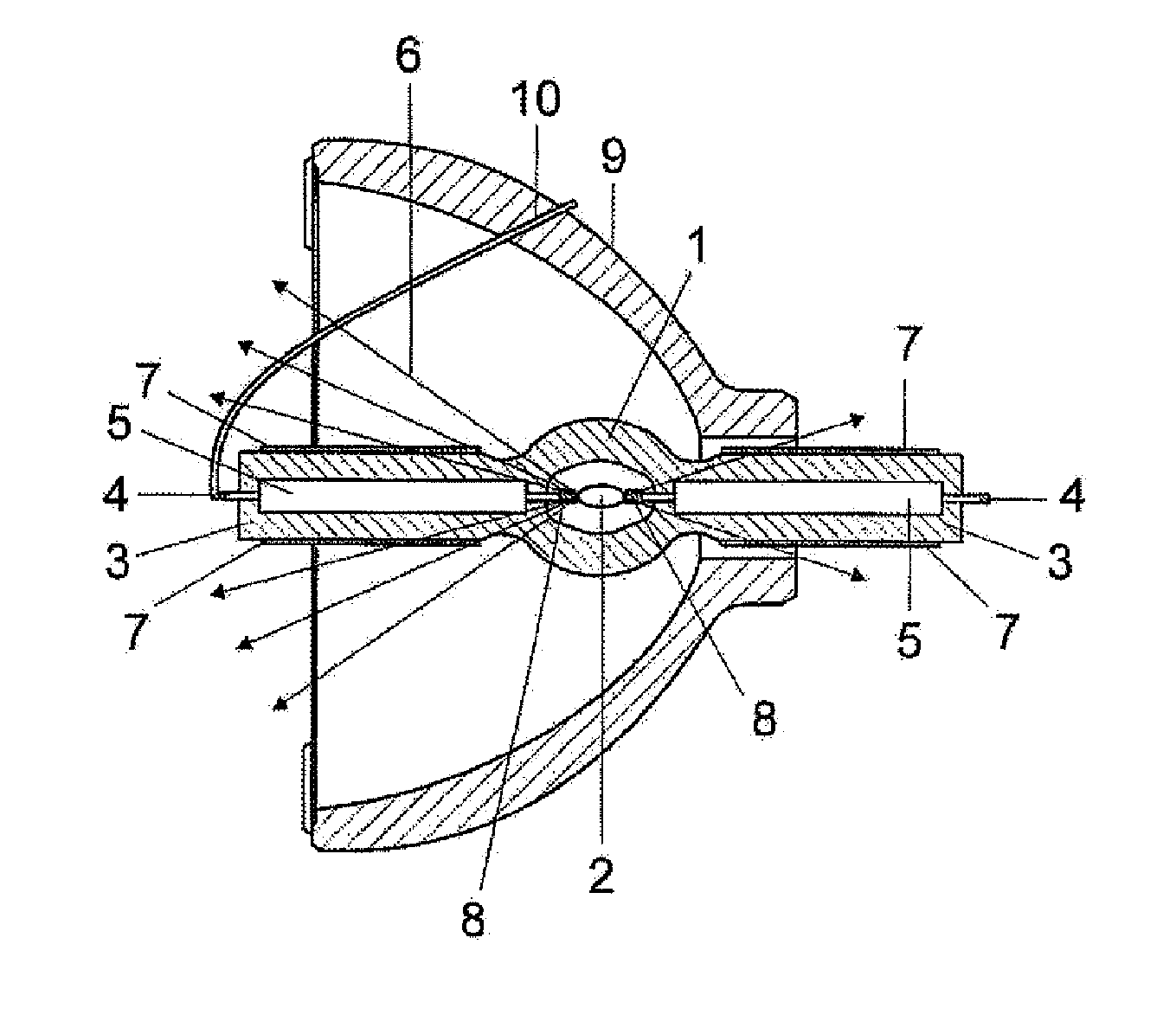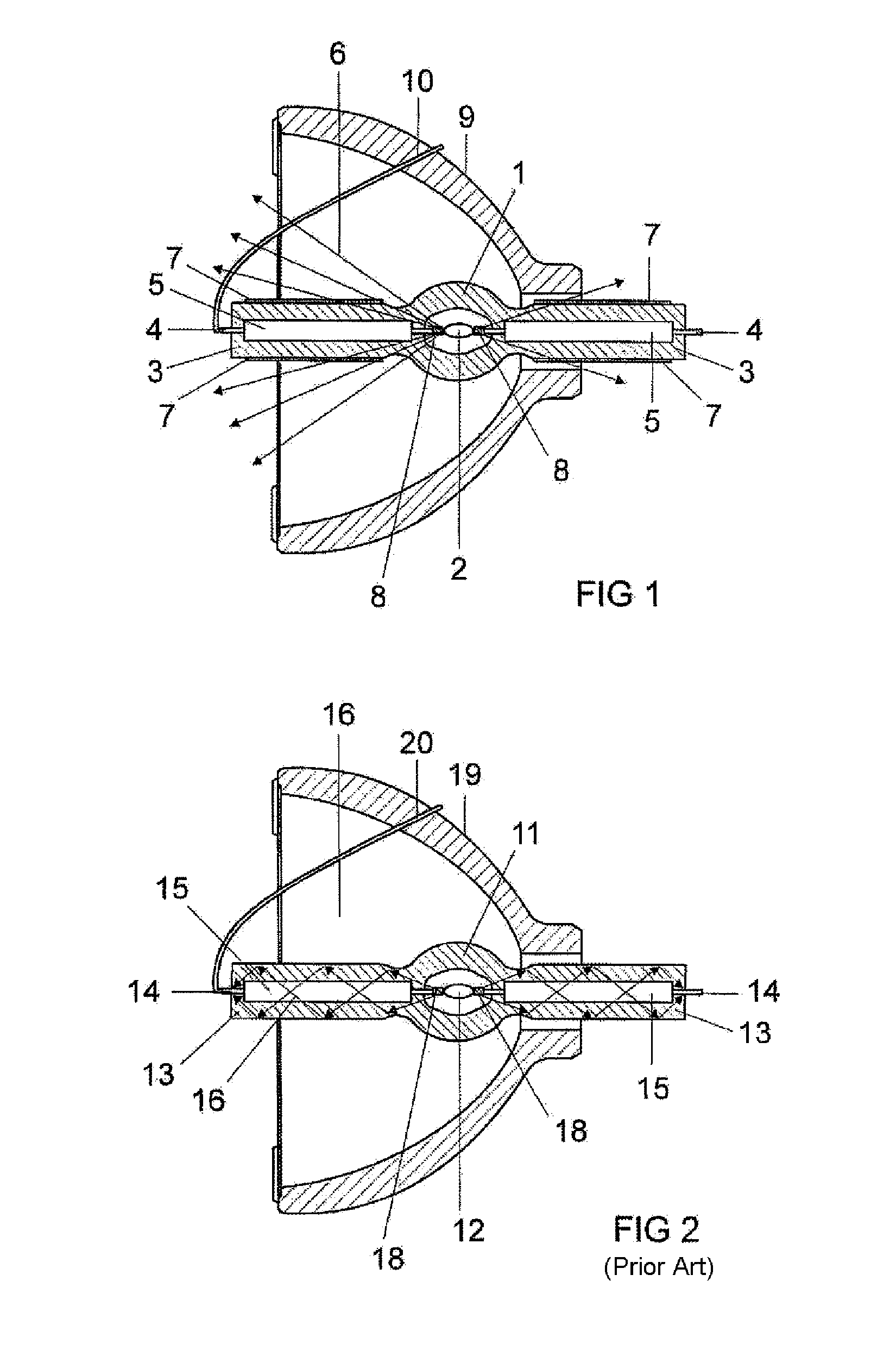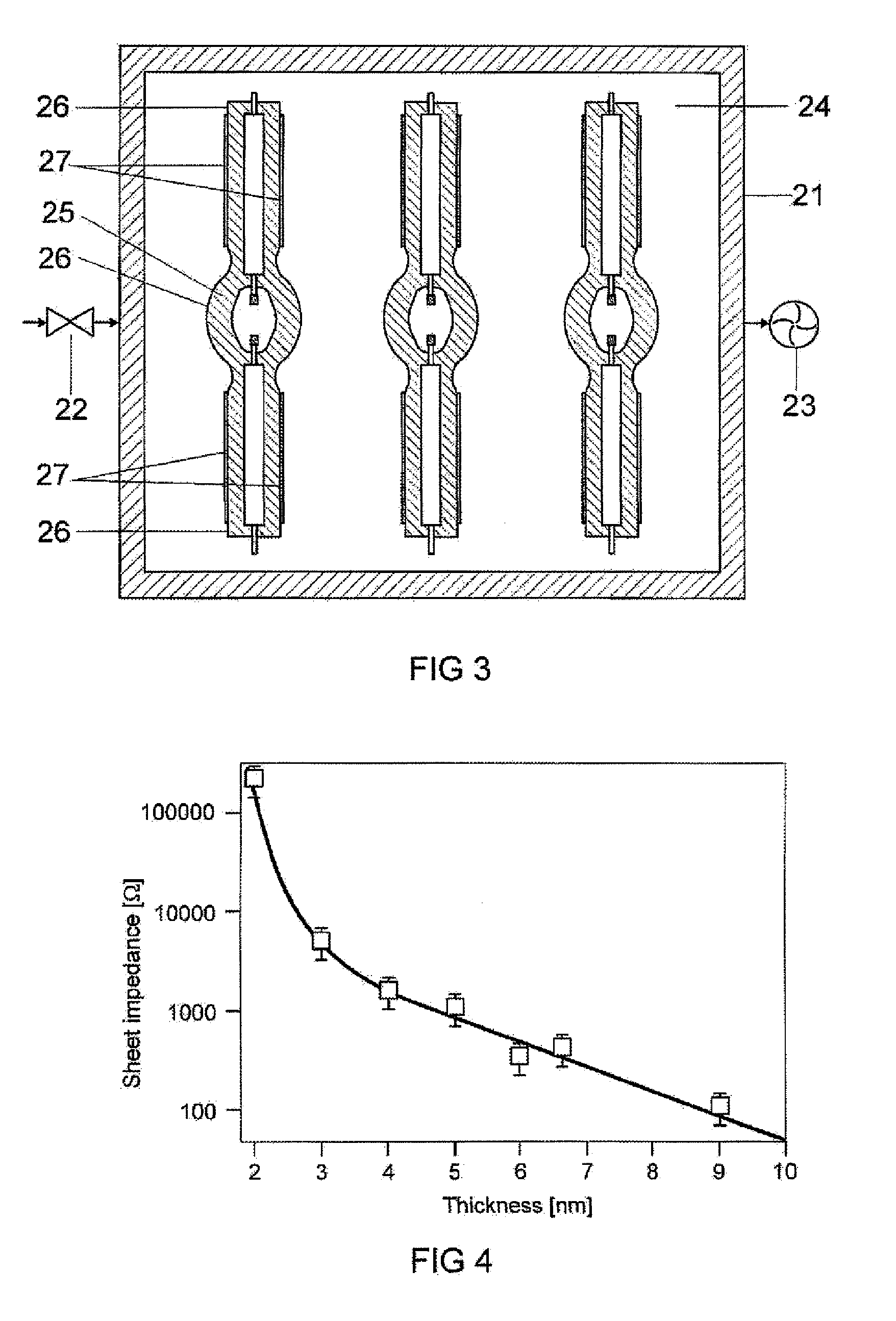Thermally improved lamp
a technology of thermal stability and lamp, applied in the field of thermal improvement of lamps, can solve the problems that lamp parts, in particular shafts or power supply lines, can also exhibit temperature-dependent degradation phenomena, and achieve the effects of high power levels, good adhesion, and sufficient long-term and thermal stability
- Summary
- Abstract
- Description
- Claims
- Application Information
AI Technical Summary
Benefits of technology
Problems solved by technology
Method used
Image
Examples
Embodiment Construction
[0028]FIG. 1 shows a schematic illustration of a high-pressure gas discharge lamp according to the invention having a reflector 9. For comparison, FIG. 2 shows a lamp having a reflector 19 from the prior art. The lamp vessels 1, 11 of the two lamps are produced from quartz glass and each have two shafts 3, 13 on opposite sides. The power supply lines 4, 14 are routed through the ends of the shafts 3, 13, and the power supply lines 4, 14 within the reflectors 9, 19 are routed with extensions 10, 20 onto the outer side of the reflectors 9, 19. The lamp housings 1, 11 are sealed on molybdenum films 5, 15 in the power supply lines 4, 14 within the shafts 3, 13.
[0029]In this type of lamp, an arc 2, 12 between the electrodes 8, 18 represents the light source. This arc 2, 12 is likewise the source of the infrared radiation 6, 16, which is denoted symbolically by arrows.
[0030]Supplementarily to the lamp in FIG. 2, FIG. 1 shows the coating 7 according to the invention on the outer side of th...
PUM
 Login to View More
Login to View More Abstract
Description
Claims
Application Information
 Login to View More
Login to View More - R&D
- Intellectual Property
- Life Sciences
- Materials
- Tech Scout
- Unparalleled Data Quality
- Higher Quality Content
- 60% Fewer Hallucinations
Browse by: Latest US Patents, China's latest patents, Technical Efficacy Thesaurus, Application Domain, Technology Topic, Popular Technical Reports.
© 2025 PatSnap. All rights reserved.Legal|Privacy policy|Modern Slavery Act Transparency Statement|Sitemap|About US| Contact US: help@patsnap.com



